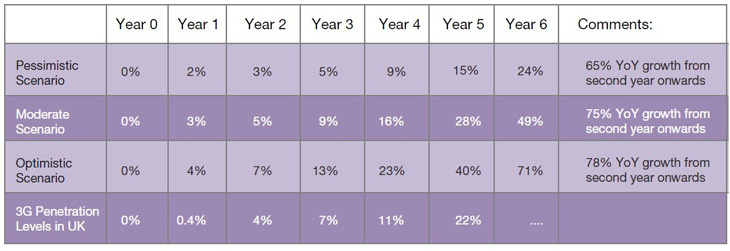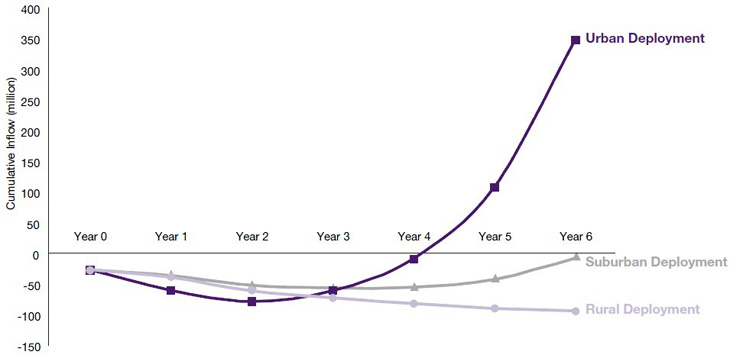
 |
|
| Energy & Resources Telecommunications Green Technology Automotive Transport & Logistics Infrastructure & Utilities IT Services Pharmacy & Life Science Retail Financial & Investment |
|
In our assessment of the economic viability of 4G deployments, we have modelled the deployment of services in the Western European market. As the most likely 4G technology, LTE was considered for deployment in three different types of markets—urban, suburban and rural. Adoption rate for the technology UMS Institute has modelled three different uptake scenarios for 4G services amongst the total user base of mobile operators—pessimistic, moderate and optimistic. The adoption rates in the moderate and optimistic scenarios, given in Figure 1, have been modelled to ramp up more quickly as well as become higher than what has been achieved for 3G technologies. UMS Institute believes that a more mature 4G ecosystem, greater user awareness of mobile data services, greater content availability and more compelling end-user devices will result in this scenario in the Asia market. Figure 1: Estimated Adoption Rate of LTE Services in Western Europe (% of Total Mobile Subscriptions) |

|
Network dimensions based on projected network traffic
In the scenarios outlined, our model indicates that the payback period for LTE deployments in urban areas is just over four years for moderate levels of service uptake (see Figure 2).
Figure 2: Cumulative Profit/Loss for Deployments Under Moderate Uptake |

|
By comparison, the business case for deployments in suburban and rural areas appears a lot weaker, with operators unable to break-even within the first six years of operations. Even with an optimistic prediction of technology adoption, suburban areas take nearly the entire six-year period, while rural areas take even longer. This is primarily a result of the fact that the CAPEX spreads amongst a larger user base in the case of urban areas.
These conclusions indicate that operators are unlikely to have a business rationale for nationwide rollout of 4G services in the near future. While UMS Institute anticipates 4G rollouts in denser urban areas, the less expensive option of 3/3.5G network upgrades is more viable for other regions. |